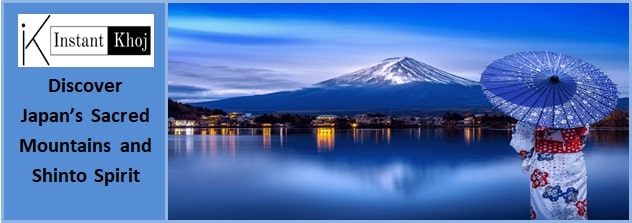Japan’s mountains have long been revered not just as natural wonders but as sacred spaces deeply woven into the country’s spiritual and cultural fabric. Among the most celebrated are Mount Fujiand Mount Haku, which hold profound significance in Shintoism and Buddhism. These towering peaks have inspired centuries of pilgrimage, ritual, and reverence, symbolizing the connection between nature, divinity, and human life.
In recent years, growing awareness of their cultural and ecological importance has spurred efforts to protect these sacred sites. Contemporary cultural heritage projects focus on safeguarding ancient pilgrimage routes, preserving traditional festivals, and conserving the forest ecosystems that frame these mountains—ensuring their spiritual and environmental legacy for future generations.
The Spiritual Significance of Mount Fuji and Mount Haku
Mount Fuji, Japan’s highest and most iconic mountain, is much more than a scenic landmark. For Shinto practitioners, it is a kami (spirit) embodying beauty, strength, and sacred presence. Buddhist traditions also regard Mount Fuji as a place for spiritual training and enlightenment. Historically, pilgrimages to its summit have been acts of devotion and purification, with climbers seeking blessings, insight, or connection to the divine.
Mount Haku (Hakusan), located in the Chubu region, is one of Japan’s “Three Holy Mountains,” alongside Mount Fuji and Mount Tate. It has served as a sacred site for both Shinto and Buddhist followers for over a millennium. The mountain’s lush forests and pristine streams are believed to be inhabited by mountain deities, and many shrines and temples on its slopes facilitate ongoing worship and pilgrimage.
Ancient Pilgrimage Routes: Pathways of Faith and Tradition
The pilgrimage routes ascending these mountains are themselves invaluable cultural assets. Trails such as the Fujisan pilgrimage path and Hakusan pilgrimage trails are centuries old, passed down through generations of spiritual seekers. These routes connect sacred shrines, natural landmarks, and resting spots, weaving together faith, history, and nature.
Pilgrimages continue to attract both devout practitioners and cultural tourists, maintaining a vibrant tradition of spiritual journeying. The pathways also serve as living classrooms, where stories, rituals, and environmental knowledge are shared and preserved.
Traditional Festivals and Rituals: Celebrating the Sacred Mountains
Traditional festivals linked to Mount Fuji, Mount Haku, and other sacred peaks play a crucial role in maintaining the mountains’ cultural vitality. Festivals often feature rites conducted by yamabushi—mountain ascetics who perform fire, water, and purification ceremonies that blend Shinto and Buddhist elements.
These celebrations not only honor the mountain deities but also strengthen community bonds and invite public participation in centuries-old customs. The festivals underscore the intimate relationship between the people, their spiritual beliefs, and the natural environment.
Conservation of Forest Ecosystems: Protecting Nature’s Sacred Veil
Beyond their spiritual importance, the forest ecosystems surrounding these sacred mountains are ecological treasures. Ancient trees, moss-covered rocks, and diverse plant and animal life create a unique environment that sustains biodiversity and stabilizes the landscape.
Cultural heritage projects now incorporate environmental conservation as a core element. Protecting forests helps preserve the sacred atmosphere of pilgrimage routes and shrines, while also maintaining water quality and preventing soil erosion. Collaborative efforts between local communities, religious organizations, and environmental groups focus on sustainable management, reforestation, and combating the impacts of climate change and tourism.
Challenges and Future Prospects
Balancing the influx of tourists with the need to protect sacred traditions and fragile ecosystems is a continuing challenge. Increased foot traffic can lead to trail erosion, littering, and disturbance of wildlife. To address these issues, authorities have implemented visitor education programs, trail maintenance, and regulations to limit environmental impact.
By integrating cultural preservation with ecological stewardship, Japan aims to keep its sacred mountains vibrant and meaningful. The commitment to honoring ancient traditions while embracing modern conservation approaches ensures that Mount Fuji, Mount Haku, and other sacred peaks remain enduring symbols of Japan’s spiritual heritage.
Conclusion
Japan’s sacred mountains are living embodiments of the nation’s deep spiritual roots and respect for nature. The intertwined preservation of pilgrimage routes, traditional festivals, and forest ecosystems reflects a holistic understanding of cultural and environmental sustainability. As these efforts progress, the sacred mountains will continue to inspire awe, devotion, and a profound sense of connection between humanity and the natural world.





One thought on “Discover Japan’s Sacred Mountains and Shinto Spirit”